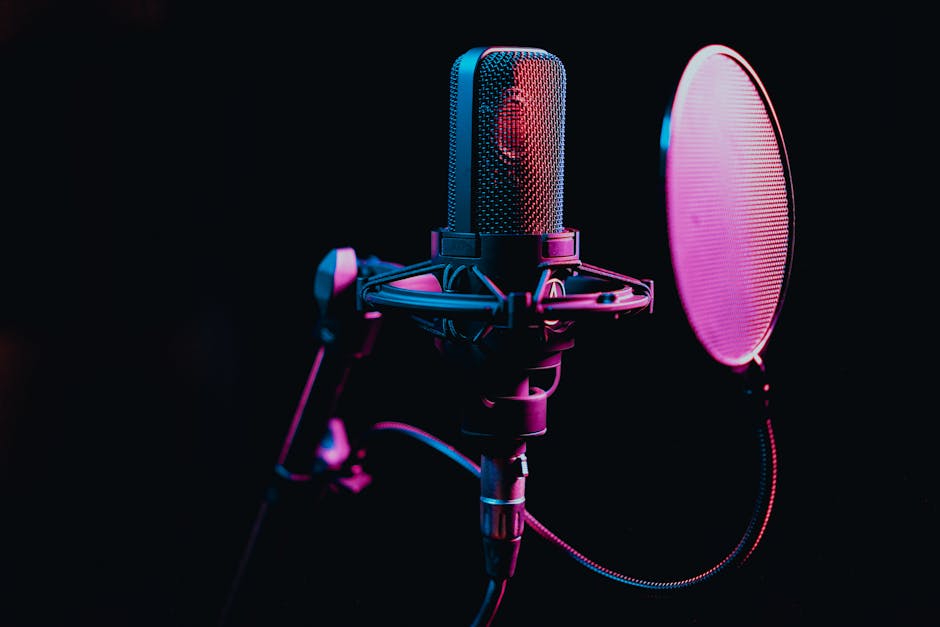The Best Practices for Backing Up My Podcast Files Securely.
The Best Practices for Backing Up My Podcast Files Securely
As a podcaster, your voice is your brand, your episodes are your legacy, and your files are the foundation of it all. Imagine losing weeks, months, or even years of hard work due to a corrupted hard drive, a stolen laptop, or an unexpected software glitch. It’s a nightmare scenario, but one that’s entirely preventable with a robust and secure backup strategy. Your podcast files aren’t just audio; they represent countless hours of creativity, research, editing, and passion. Protecting them isn’t just a good idea; it’s an absolute necessity for the longevity and peace of mind of your podcasting journey. This guide will walk you through the definitive best practices to ensure your precious podcast files are always safe, sound, and securely recoverable.
Beyond the Mic: Identifying Every Podcast Asset Worth Safeguarding
When we talk about “podcast files,” most people immediately think of the final audio episode. While that’s crucial, your podcast ecosystem is far richer and includes many other vital components that demand secure backup. A truly comprehensive backup plan starts with understanding the full scope of what needs protection.
Raw Recordings and Interview Tracks
These are the foundational elements of your show. Whether it’s your solo monologue, guest interviews, or field recordings, these unedited audio files are irreplaceable. Losing them means losing the source material entirely, making re-recording often impossible or impractical. Even after an episode is published, keeping raw files can be valuable for future compilations, bonus content, or re-edits.
Editing Project Files
If you use software like Audacity, Adobe Audition, Logic Pro, or DaVinci Resolve, your editing project files (e.g., .aup3, .sesx, .logicx, .drp) contain all your cuts, effects, music, and sound design. Losing these means you can’t easily make revisions, fix errors, or repurpose segments without starting from scratch. These files are the blueprint of your finished product.
Show Notes, Transcripts, and Metadata
It’s not just audio! Your show notes provide context, links, and SEO value. Transcripts make your podcast accessible and discoverable. Metadata (titles, descriptions, tags) ensures your episodes are properly cataloged and found. These text-based assets might seem small, but they are integral to your podcast’s reach and professionalism. Treat them with the same importance as your audio files.
Intro/Outro Music, Sound Effects, and Branding Assets
Your podcast’s unique sound identity comes from its music and sound effects. Losing these means scrambling to find replacements or recreating them, which can disrupt your show’s consistency and branding. Similarly, any cover art, logos, or promotional graphics should also be part of your backup routine.

The Podcaster’s 3-2-1 Rule: Crafting a Robust Multi-Layered Backup Strategy
The “3-2-1 backup rule” is a golden standard in data protection, and it’s perfectly suited for securing your podcast files. It’s not just about having a backup; it’s about having redundant, diverse, and geographically separated backups to ensure maximum safety. Adhering to this rule dramatically reduces the risk of permanent data loss.
3 Copies of Your Data
This means you should have one primary copy (the files you’re actively working on) and at least two additional copies. Why three? Because a single backup can fail. A second backup provides an extra layer of protection, ensuring that if one copy becomes corrupted or inaccessible, you still have another to fall back on.
2 Different Storage Types
Don’t put all your eggs in one basket, or rather, all your files on one type of storage. This could mean keeping one copy on your computer’s internal drive (your primary), another on an external hard drive, and a third on cloud storage. The idea is to protect against a specific type of storage failure. For instance, an external hard drive might fail due to physical damage, but your cloud storage won’t be affected by that.
1 Offsite Backup
This is perhaps the most critical component for true disaster recovery. One of your backups absolutely must be stored in a different physical location than your primary and secondary copies. Think about scenarios like fire, flood, theft, or even a localized power outage. If all your backups are in your home studio, a single catastrophic event could wipe them all out. Cloud storage inherently fulfills this requirement, as your files are stored on remote servers.
Choosing Your Digital Vaults: Secure Local and Cloud Solutions for Podcast Archives
With the 3-2-1 rule in mind, let’s explore the specific types of storage solutions available to podcasters, focusing on their security implications and best use cases.
External Hard Drives and SSDs
These are excellent for local backups. SSDs (Solid State Drives) are generally faster and more durable (no moving parts) than traditional HDDs (Hard Disk Drives), though often pricier. They are perfect for your second copy in the 3-2-1 rule. To enhance security, always choose a reputable brand and consider models with built-in hardware encryption or use software encryption for the drive. Store them safely when not in use, ideally in a fireproof safe or secure location.
Network Attached Storage (NAS) Devices
For more serious podcasters or those with extensive media libraries, a NAS offers a powerful local backup solution. A NAS is essentially a dedicated file storage server connected to your home or studio network. It can host multiple hard drives, often configured in RAID arrays for data redundancy (meaning if one drive fails, your data is still safe). A NAS can serve as a central hub for all your podcast files and can often be configured to automatically back up to cloud services, fulfilling multiple aspects of the 3-2-1 rule. Security here involves strong passwords, network firewalls, and keeping the NAS software updated.
Cloud Storage Services
Cloud storage is indispensable for the “1 offsite” component of the 3-2-1 rule. Services like Google Drive, Dropbox, OneDrive, Backblaze, and Amazon S3 offer scalable and accessible storage. When selecting a cloud provider, prioritize those with strong security features:
- End-to-end encryption: Ensures your files are encrypted before leaving your device and only decrypted when you access them.
- Two-Factor Authentication (2FA): Adds an extra layer of security to your account login.
- Reputation for privacy and data security: Research their track record and policies.
- Versioning: Allows you to revert to previous versions of a file, protecting against accidental deletions or corruptions.
While convenient,




Post Comment